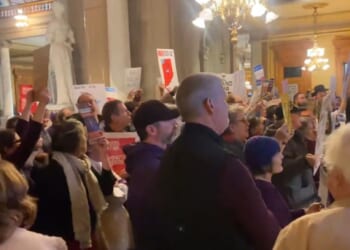
This week, New Yorkers have a chance to vote on more than just their next mayor. By approving a series of ballot proposals, they can help spur a housing revolution in the city, paving the way for desperately needed supply-side reforms that will boost housing construction and, ultimately, affordability.
Proposals 2, 3, and 4 aim to accelerate the approval process for affordable and mixed-income housing construction, while Proposal 5 modernizes and consolidates city mapping functions. Through a mix of fast-track initiatives, ending the customary veto city council members enjoy over land-use projects in their districts (“member deference”), and the creation of an Affordable Housing Appeals Board, the measures will streamline decisions on where and what kind of housing can be built—in some cases cutting a seven-month approval process down to 90 days.
Finally, a reason to check your email.
Sign up for our free newsletter today.
Here’s a breakdown of the proposals and an explanation of why housing advocates from across the policy spectrum are so excited about them.
Proposal 2 tackles housing affordability by fast-tracking zoning decisions—required when the city or developers want to modify land use for mixed-use and multi-story buildings—in the 12 districts identified by the Department of City Planning as having the lowest number of affordable-housing units. Zoning changes would require the approval of Community Boards and the City Planning Commission, which in turn would consider the adequacy of existing transportation and other infrastructure in deciding whether to approve or deny a change.
This change would affect only projects where residents’ incomes are limited—including private construction subject to Mandatory Inclusionary Housing (MIH), in which developers set aside a percentage of units at below-market rates. Granting final say to the City Planning Commission rather than the city council, as is currently the case, should reduce approval times in these districts from the current 215 days to 90 days.
The proposal would advance the goal of Mayor Eric Adams’s “City of Yes” proposals to “build a little more housing in every neighborhood.” It would also provide a test case for expanding fast-track approval across the city.
Proposal 3 provides the same City Planning Commission fast-track approval process for projects that require only modest zoning changes. In medium- and high-density areas, this includes projects seeking an increase in permitted floor area of up to 30 percent. In low-density areas, it applies to projects below 45 feet in height (approximately three stories).
This proposal would make zoning changes that incrementally increase density across the city much easier, permitting smaller projects to rise faster and lowering costs associated with securing approvals.
Proposal 4, like Proposal 2, applies only to affordable housing and creates an appeals board for rejected projects. Consisting of the mayor, council speaker, and the relevant borough president, the board would be able to overturn city council decisions rejecting affordable-housing projects.
Finally, Proposal 5 would task the Department of City Planning with consolidating and digitizing the City Map, currently administered by the five borough presidents’ offices.
That these proposals have generated so much excitement among the city’s growing coalition of pro-housing advocates suggests their potential to alleviate the housing crunch.
New York City’s need for new housing is dire. A 2024 report from the Regional Plan Association highlighted that the city could face a housing gap of 920,000 units by 2035.
Casey Berkovitz, director of external affairs for the New York City Charter Revision Commission, said that the commission explicitly focused on measures that would address housing affordability. The current charter, which outlines the city’s administrative law and functioning, “perversely incentivizes developers only to apply for big rezonings because that’s the only thing that pays off.”
After holding more than “30 hours of testimony and receiving over 3000 written comments,” the commission found that “one of the biggest hurdles to new housing is member deference”—whereby local council members “functionally have final say over land use in their district,” noted Berkovitz.
Because the proposals would shift power away from individual members and toward the City Planning Commission, the city council attempted to block the measures from going on the ballot. I spoke to many voters who received leaflets from a political action committee urging them to vote “no” on the measures. Berkovitz, however, maintains that these proposals “would represent the biggest land use changes since 1975.”
Comptroller Brad Lander, who has endorsed Zohran Mamdani’s affordability-led campaign for mayor, echoed this line of thinking in an interview. It’s about “getting the balance right,” he said, because “we have not produced enough housing.”
According to Lander, the proposals don’t pit the need to increase supply against the need for community engagement. Rather, “everyone in the real world focused on these issues cares about both those things,” he said. The proposals would “save time, money, and add predictability” to housing construction across the city and would “make it more likely that a developer would bring forward a project.”
Lander, who has urged progressives to support the proposals, said they can also be seen as “align[ing] the goal of [increasing] supply of housing with the goal of fairness.” “New Yorkers want a growing city,” he concluded, and these proposals would pave the way toward a “more comprehensive planning framework.”
In an election where voters have identified affordability as a top concern, these four ballot proposals could not only deliver new housing in the short term but also generate momentum for long-term, evidence-based housing reforms.
Photo by Gary Hershorn/Getty Images
City Journal is a publication of the Manhattan Institute for Policy Research (MI), a leading free-market think tank. Are you interested in supporting the magazine? As a 501(c)(3) nonprofit, donations in support of MI and City Journal are fully tax-deductible as provided by law (EIN #13-2912529).
Source link
















